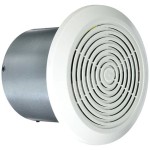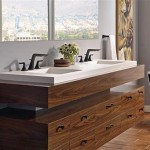How to Remove Mold in a Bathroom Ceiling
Mold growth in a bathroom ceiling is a common issue, primarily due to the consistently high humidity levels and poor ventilation often found in these spaces. Addressing mold promptly and effectively is crucial, not only for aesthetic reasons but also for maintaining a healthy indoor environment. Mold spores can trigger allergic reactions, respiratory problems, and other health issues. Understanding the underlying causes of mold growth and employing the appropriate removal techniques are paramount for successful remediation.
This article provides a comprehensive guide on how to remove mold from a bathroom ceiling, covering identification, safety precautions, removal methods, and preventative measures. Prioritizing safety and thoroughness will ensure a cleaner, healthier bathroom environment.
Identifying Mold Growth
Accurately identifying mold is the first step in the removal process. While various types of mold can grow in bathrooms, they generally share common characteristics. Visual inspection is usually the first indication of a problem. Mold often appears as dark spots or patches, ranging in color from black, green, brown, or even white. These spots may be fuzzy, slimy, or powdery in texture, depending on the type of mold and the environmental conditions.
Beyond visual cues, a musty or earthy odor is a strong indicator of mold presence, even if it's not immediately visible. This odor is caused by microbial volatile organic compounds (MVOCs) released by the mold as it grows. If a persistent musty smell lingers in the bathroom, it's essential to investigate further, even if no visible mold is apparent.
Water stains or discoloration on the ceiling are often precursors to mold growth. These stains indicate that moisture is accumulating in the ceiling, creating a favorable environment for mold to thrive. Leaks from the roof, pipes, or shower above can all contribute to this moisture buildup. Addressing these water sources is crucial to prevent future mold problems.
It is important to differentiate mold from mildew. Mildew is often white or gray and grows on the surface. It is much easier to clean than mold. Mold, on the other hand, penetrates the surface and is often darker and more difficult to remove.
For cases of extensive or persistent mold growth, professional mold testing can be considered. This involves taking samples of the affected area and sending them to a laboratory for analysis. Mold testing can identify the specific types of mold present and help determine the extent of the contamination. However, for most common bathroom mold situations, visual identification and appropriate cleaning methods are sufficient.
Safety Precautions
Before beginning any mold removal project, it is crucial to prioritize safety. Mold exposure can pose health risks, especially for individuals with allergies, asthma, or compromised immune systems. Taking the necessary safety precautions will minimize the risk of inhaling or coming into contact with mold spores.
Protective gear is essential. A properly fitted respirator or N-95 mask will prevent the inhalation of mold spores. Eye protection, such as goggles or safety glasses, will shield the eyes from irritation. Wearing gloves will protect the skin from direct contact with mold and cleaning solutions. Long sleeves and pants are also recommended to minimize skin exposure.
Proper ventilation is also very important. Opening windows and doors will help circulate fresh air and reduce the concentration of mold spores in the air. Using a fan to direct airflow away from the work area will also minimize exposure. If the bathroom lacks adequate natural ventilation, a portable air purifier with a HEPA filter can be used to capture airborne mold spores.
Containment measures can prevent the spread of mold spores to other areas of the house. Covering the floor with plastic sheeting will protect it from contamination. Sealing off the bathroom door with plastic sheeting and tape will prevent mold spores from escaping into other rooms. When removing moldy materials, place them in sealed plastic bags to prevent the release of spores during disposal.
It is important to only use cleaning solutions in well ventilated areas too. Some cleaning solutions can be harmful if inhaled excessively.
If mold growth is extensive (more than 10 square feet) or if you have health concerns, it's recommended to consult with a professional mold remediation company. These professionals have the expertise and equipment to safely and effectively remove large-scale mold infestations.
Effective Removal Methods
Once safety precautions are in place, the actual mold removal process can begin. Several effective methods can be employed, depending on the severity of the mold growth and the type of ceiling material.
For mild mold growth on non-porous surfaces like painted drywall, a simple cleaning solution can be effective. A mixture of bleach and water (1 part bleach to 10 parts water) is a common choice. However, it's crucial to understand the risks associated with bleach. Always wear protective gear, ensure adequate ventilation, and never mix bleach with ammonia or other cleaning products, as this can create toxic fumes. Apply the bleach solution to the moldy area using a sponge or cloth, scrubbing gently to remove the mold. Rinse the area thoroughly with clean water and dry it completely. It is important to note that bleach will not remove the stain caused by the mold, but it kills the mold spores.
An alternative to bleach is using a mixture of white vinegar and water (equal parts). Vinegar is a natural disinfectant and can effectively kill many types of mold. Apply the vinegar solution to the moldy area, let it sit for an hour, and then scrub with a brush or sponge. Rinse with clean water and dry thoroughly. Vinegar does have a strong smell, but it dissipates quickly.
Another option is using hydrogen peroxide. Hydrogen peroxide (3% concentration) is a mild antifungal and antiviral solution. Spray it directly onto the moldy surface, let it sit for 10-15 minutes, and then scrub with a brush or sponge. Wipe away the residue with a clean cloth and dry the area thoroughly. Hydrogen peroxide has a bleaching effect, so test it on an inconspicuous area first to ensure it doesn't discolor the ceiling.
For porous surfaces like acoustic ceiling tiles or severely damaged drywall, the mold may have penetrated deep into the material. In these cases, simply cleaning the surface may not be enough. Removal and replacement of the affected material may be necessary. Carefully cut out the moldy section of the drywall or remove the damaged ceiling tiles. Place the removed material in a sealed plastic bag for disposal. Before installing new drywall or tiles, ensure the underlying area is clean and dry. Consider applying a mold-resistant primer to the ceiling to prevent future mold growth.
After cleaning or removing mold, it is crucial to address the underlying cause of the moisture problem. Repair any leaks in the roof or plumbing. Improve ventilation in the bathroom by installing or upgrading the exhaust fan. Encourage occupants to run the fan during and after showers and baths to remove excess moisture. Regularly inspect the bathroom ceiling for signs of water stains or mold growth. Addressing moisture issues promptly will prevent future mold problems.
Preventative Measures
Preventing mold growth is always preferable to dealing with a mold infestation. Implementing several preventative measures can significantly reduce the risk of mold developing in the bathroom ceiling.
Adequate ventilation is the most crucial factor in preventing mold growth. Ensure the bathroom has a properly functioning exhaust fan. The fan should be sized appropriately for the size of the bathroom and used regularly during and after showers and baths. A timer switch can be installed to ensure the fan runs long enough to remove excess moisture. Opening windows and doors whenever possible will also improve ventilation.
Controlling humidity levels is also critical. A dehumidifier can be used to reduce humidity in the bathroom, especially during humid months. Monitor the humidity level with a hygrometer and aim to keep it below 60%. Wiping down wet surfaces after showering or bathing will also help reduce moisture buildup.
Promptly address any leaks or water damage. Repair leaky faucets, showerheads, or pipes as soon as they are detected. Check the roof and ceiling for signs of water stains or leaks. Addressing water damage quickly will prevent moisture from accumulating and creating a favorable environment for mold growth.
Using mold-resistant products can also help. Mold-resistant paint can be applied to the bathroom ceiling to inhibit mold growth. Mold-resistant drywall and ceiling tiles are also available. When replacing bathroom fixtures, choose materials that are resistant to mold and mildew.
Regular cleaning and maintenance are essential. Clean the bathroom regularly with a mild detergent to remove dirt and grime. Pay particular attention to areas that are prone to moisture, such as the shower, tub, and sink. Inspect the bathroom ceiling regularly for signs of water stains or mold growth. By taking proactive steps to prevent mold growth, a cleaner, healthier, and more enjoyable bathroom environment can be maintained.
Proper disposal of mold-contaminated materials is also important for prevention. Any materials removed from the bathroom that are contaminated with mold should be placed in a sealed plastic bag and disposed of properly. This helps prevent the spread of mold spores to other areas of the home.
In summary, removing mold from a bathroom ceiling requires a combination of careful identification, thorough safety precautions, effective removal methods, and proactive preventative measures. By following the guidelines outlined in this article, individuals can successfully remediate mold problems and maintain a healthy bathroom environment.

How To Permanently Remove Mold From Bathroom Ceiling With Vinegar

How To Get Rid Of Mold In Bathroom Ceiling Step By Guide Aloraircrawlspace

6 Steps To Get Rid Of Mold On The Bathroom Ceiling Redfish Inspections

Bathroom Ceiling Mold Removal When To Clean Call Branch Environmental

Professional Tips For Bathroom Ceiling Mold Removal

Mold On Bathroom Ceiling How To Remove From Ceilings

Detecting And Preventing Mold Growth On Your Bathroom Ceiling Trusscore

Mold On Bathroom Ceiling How To Remove From Ceilings

How To Remove Black Mold From A Bathroom Ceiling

How To Remove Mould From Ceilings Simply Spotless Cleaning







